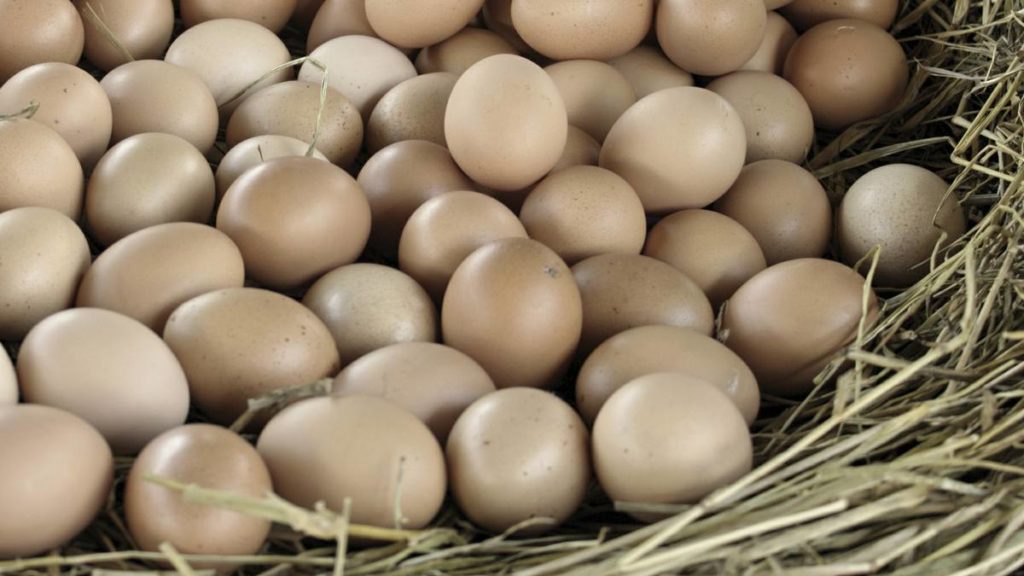Thin eggshells are a fairly common problem and can be more serious than you might think. Of course, thin eggshells are a concern as the egg will easily break in transit from coop to kitchen but more concerning is when an egg breaks before being laid inside the hen.
 More often than not, an egg breaking prior to being laid will result in the death of the hen. If the thin shelled egg breaks whilst actually being laid there is a chance of the remnants being naturally expelled or removed by the keeper but often not.
More often than not, an egg breaking prior to being laid will result in the death of the hen. If the thin shelled egg breaks whilst actually being laid there is a chance of the remnants being naturally expelled or removed by the keeper but often not.
A broken egg in the nestbox will attract the other hens who will eat it in short order. Once the hens have a taste for eggs and know they’re edible they may well start deliberately breaking and eating their eggs. This can be a very hard habit to break them of.
Thin eggshells are typically misshapen and have small holes in them which makes them unsaleable and they cannot be safely stored.
Cause of thin eggshells
Genetics
Occasionally a strain of birds or an individual bird is just predisposed to laying thin shelled eggs. There is little you can do about that apart from improving the hen’s diet as below to help her increase the egg thickness.
Diet – Lack of Available Calcium
Thin eggshells are uncommon with commercial hen strains. Shell quality is a factor in selection when they’re bred. Commercial keepers almost invariably feed prepared compounds such as layers pellet which prevents the problem appearing. Home keepers are the ones who tend to have the problem as it’s usually due to diet.
Chickens are a little like children who, given the chance, will try and live on chocolates and ice cream. Well meaning keepers sometimes give their hens more treats than are good for them. For example; hens love tomatoes. They will just keep eating and eating them. But they can have too much of a good thing and if they fill up on treats they won’t be able to eat their ‘proper’ food and so suffer dietary deficiencies.
The shell of an egg is mainly made of calcium carbonate and if the hen doesn’t have enough calcium in her diet she cannot form a good shell. So critical is this that her body will actually draw calcium from her own bones – with yet more health consequences long term.
Normally hens will seek out calcium and providing a source like crushed oyster shell will be enough to cure thin eggshells. In effect she will eat the calcium rich oyster shell to make her own eggs. Where keepers are mixing their own feeds, limestone flour can be added to the mash to the same result.
Diet – Lack of Vitamins
There is another reason for thin eggshells; not a lack of calcium but a shortage of vitamins, particularly vitamin D. The lack of the vitamin means the hen cannot process the calcium. The old fashioned keepers would add cod liver oil to the feed to provide vitamin D
A more modern solution is to add a product like Shell Aid to the water – ensuring all the hens get the required vitamins and minerals whatever they eat.
What to do if your hens are laying thin shelled eggs
- Only give the hens a balanced prepared feed like layers pellets or mash until the problem is resolved. No treats or corn.
- Make sure a source of additional calcium like crushed oyster shell is freely available at all times
- Provide additional vitamins with a product like Shell Aid in the water until the problem is resolved.
Further Articles All About Eggs
- Araucana Egg Shell Colour & Genetics
- Build Your Own Artificial Lighting System for Winter Egg Production
- Changing Egg Yolk Colour with Feeding
- Double Yolk Eggs – What Causes Double Yolk Eggs?
- Egg Shell Colour Chart by Breed of Hen
- Egg Structure – The Structure of an Egg
- Eggs from Different Species
- Know Your Eggs? – Egg Descriptions Explained
- Marketing Your Surplus Eggs – How to Sell Your Eggs
- Nutritional Value of Eggs – Are Free Range Eggs Better for You?
- Pale Eggs – Egg Shell Colour
- Problems With Eggs – Yolks & Whites
- Saving Money – Economics of Home Produced Eggs
- Selling Your Surplus Eggs at Markets
- Selling Your Surplus Eggs from Home – Farm Gate Egg Sales
- Thin Eggshells – Causes & Cures
- What to do with Surplus Eggs? How to Store Eggs

